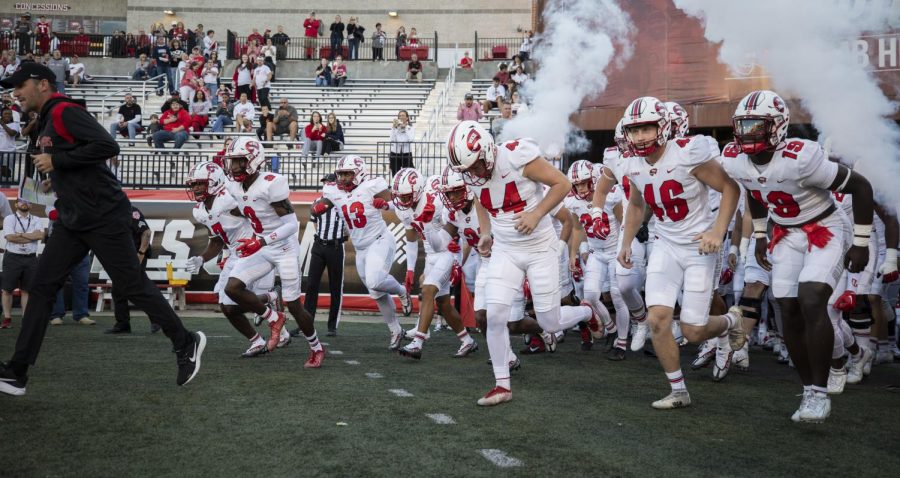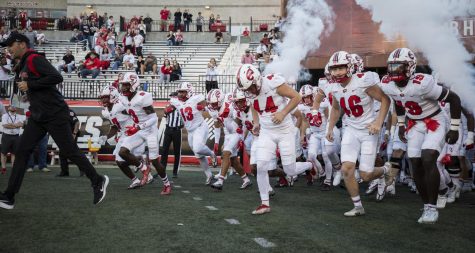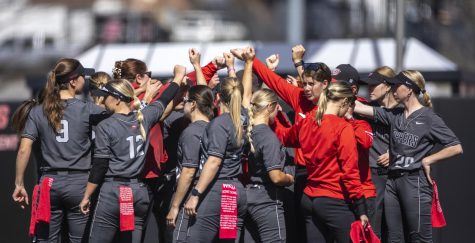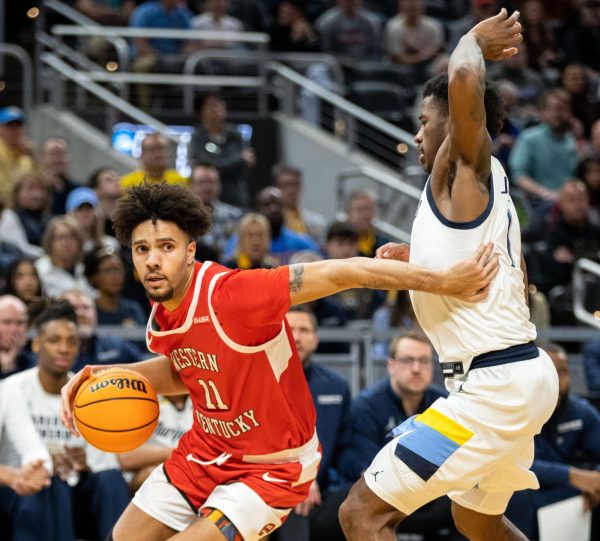Athletics could face cuts, while student fees could rise
January 23, 2018
In light of potential budget cuts and an overall budget crisis at WKU, spending across the university is in a very delicate situation and the athletics department is no exception.
A database compiled by USA Today analyzing NCAA finances at all Division I universities shows that in 2016, which is the latest year for available data, the WKU sports programs brought in a lower total revenue than the previous school year for only the second time in the past 11 years.
The fee for athletics is the highest mandatory student fee at WKU, and signs aren’t pointing toward a decrease in that number.
“I don’t know how that student fee was put in place, but I don’t anticipate that student fee increasing,” president Tim Caboni said. “Yes, there is a high student fee. And that revenue in student fees has been declining for the past four to five years.”
However, as WKU’s funding into the athletic department has decreased in the past, the student fees have increased as a result and that trend could take effect in the near future when the next round of budget cuts are announced.
In the 2015-2016 school year, WKU funding decreased by almost 19 percent while the total revenue student fees rose by almost 11 percent.
The athletics fee has seen small fluctuation over the past five years, with a slight dip from $216 in 2013-2014 to $212 in 2014-2015 before the fees went back up to $218 for the 2015-2016 year and have remained at that number since.
According to the 2017-2018 budget summary, students pay a $218 fee each semester directly toward athletics. The next highest fee is the student centers fee which is $62.
Since 2005, the sports program has failed to turn a profit. Annually, the athletic department’s total revenue has been propped up by school funds and student fees to match the expenses, which include scholarships, coaching and facilities. This is not a rarity for non Power 5 universities who allocate funding to their athletic departments to meet expenses, and few of these types of universities turn a significant profit.
WKU allocates 55 percent between school funding and student fees.
Texas A&M, a Power 5 school, generated the largest profit, bringing in almost $60 million from its athletic department with no allocation from the university, according to the database from USA Today.
“I came from the University of Kansas,” Caboni said. “If you ask someone what they know about the University of Kansas, they will tell you one of two things: Jayhawk or basketball. They don’t know that it was the No. 2 pharmacy school in the nation for research.”
In the spring of 2016, the University Senate passed a resolution about what it wanted from Caboni, asking him to “make academics a priority under the budget.”
Under the tenure of President Gary Ransdell, a large priority was placed on the athletics program focusing primarily on the exposure of the athletic teams to draw students to WKU. WKU Athletic Director Todd Stewart agrees.
“There’s nothing really on our campus that’s going to get 7,500 people together and 20,000 people together on a Saturday,” Stewart said, prior to WKU’s basketball game in front of a sell-out crowd last Saturday. “There’s nothing else our university can do to get that many people together. You see how many students are here tonight. If we’re not successful, and you don’t have the students getting together for football and basketball games the way they do now, as a university, we need people coming to our campus.”
Per the University Senate report on budget trends since 2004, WKU educational and general funds increased by more than 100 percent from 2004 to 2015. In contrast, athletics has seen an increase of nearly 140 percent in funds over that same period of time.
It is important to note that, as of 2015, athletics funding made up less than 10 percent of the budget, as compared to academic affairs accounting for nearly half.
“For us to be in Conference USA, a 14-member conference, and we’re 11th in budget, and to have four million, close to five million cut from our budget over the last five years, it’s really pretty amazing that we’ve been as successful as we’ve been,” Stewart said. “My concern is, already ranking 11th in budget, if we do continue to face cuts, I am concerned about it affecting our ability to successfully compete.”
WKU was second in C-USA in school funding last year behind only the University of Alabama at Birmingham. This was after WKU led the conference in school funding in 2015. Despite ranking second in school funding, WKU finished 2016 ranked ninth in the conference in total revenue.
The leader in sports revenue in C-USA in 2016 was Old Dominion, who also joined the conference in 2013. Their sports programs brought nearly $45 million in total revenue, but did not receive a single dollar in school funding.
Old Dominion relies primarily on student fees for its sports revenue, bringing in almost $29 million in student fees alone in 2016, or approximately $1,200 per student. That student fee revenue was only $711,048 less than WKU’s total sports revenue from that same year.
WKU ranked second to last in C-USA in student fees last year at just over $4 million, and that’s only because Louisiana Tech had no student fees at all. This makes it extremely likely that, as school funding decreases, student fees will increase.
“WKU made the decision to be in Division 1 athletics, and anything that we’re going to do we need to do as well as we possibly can do,” Caboni said. “Will there be reductions to which athletics will be deducted? My assumption is that the budget council is looking at every unit across the enterprise, including athletics.
“I think everything is on the table.”
Reporter Evan Heichelbech can be reached at 502-415-1817 and [email protected]. Follow him on Twitter at @evanheich.
Reporter Tyler Eaton can be reached at 270-776-6797 [email protected]. Follow him on Twitter at @at_eaton


























